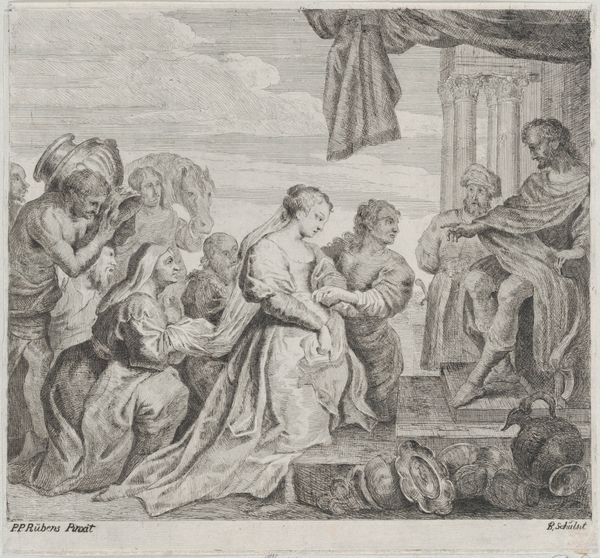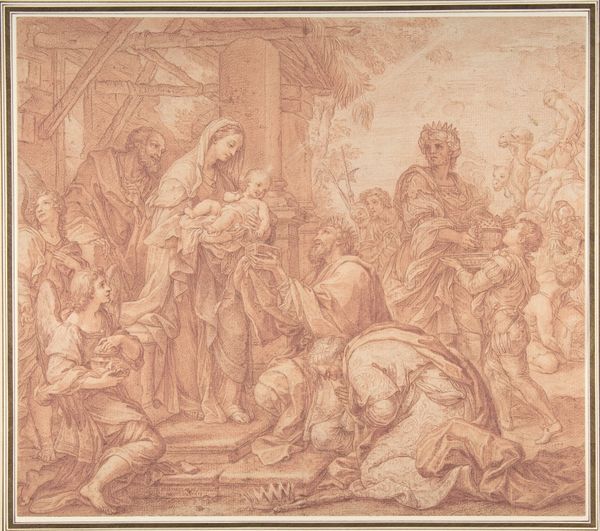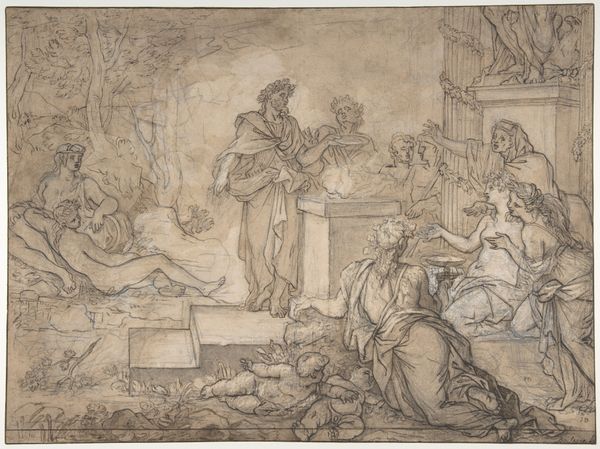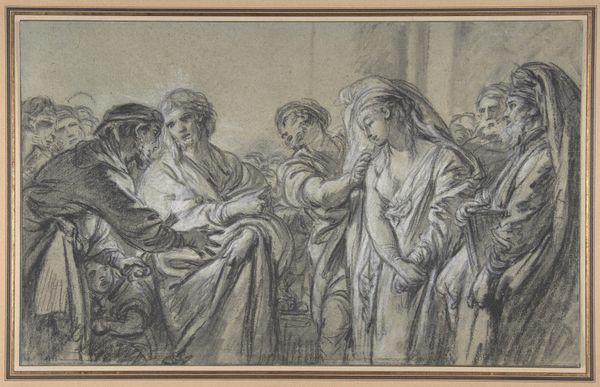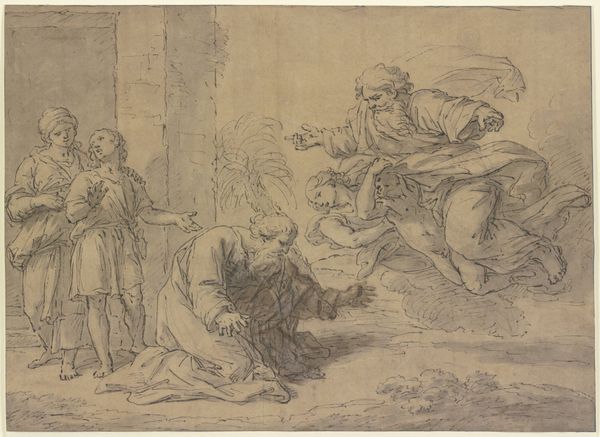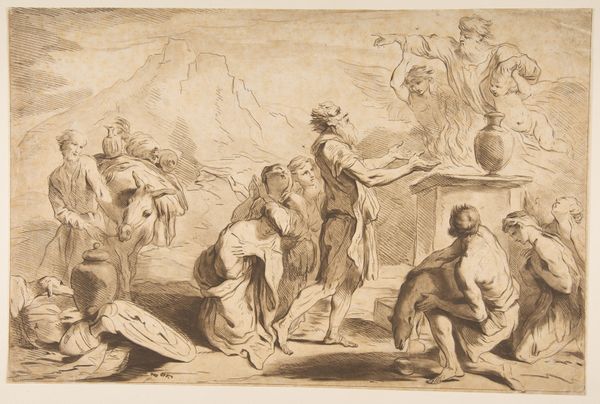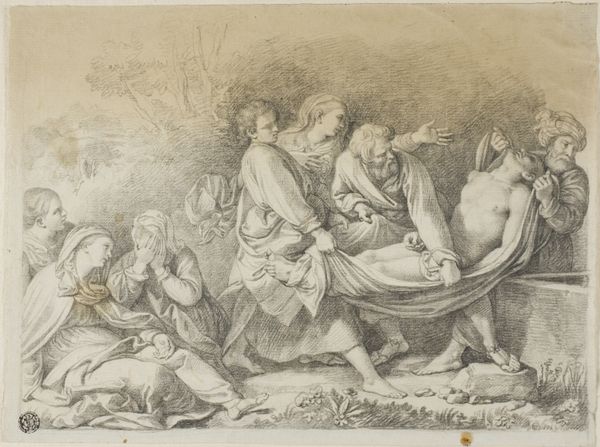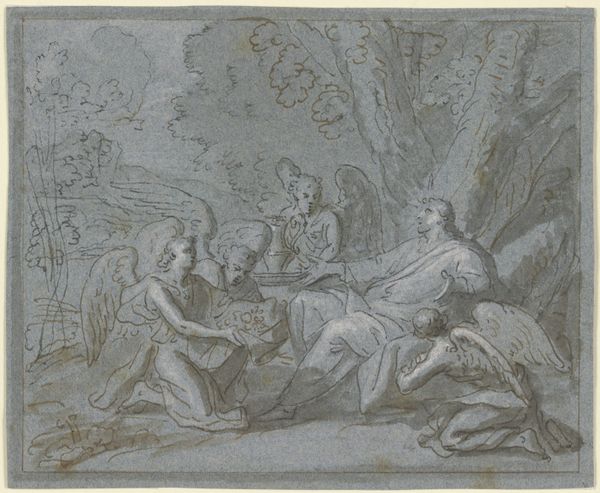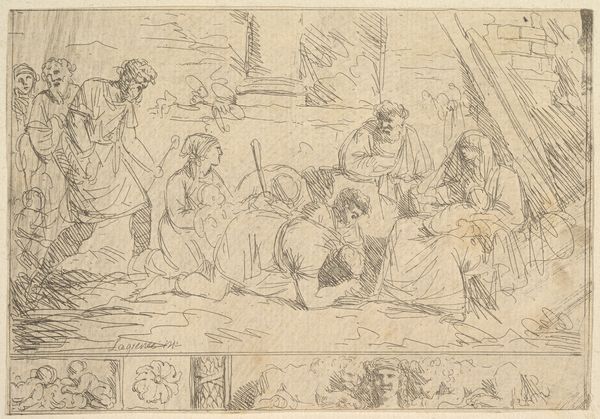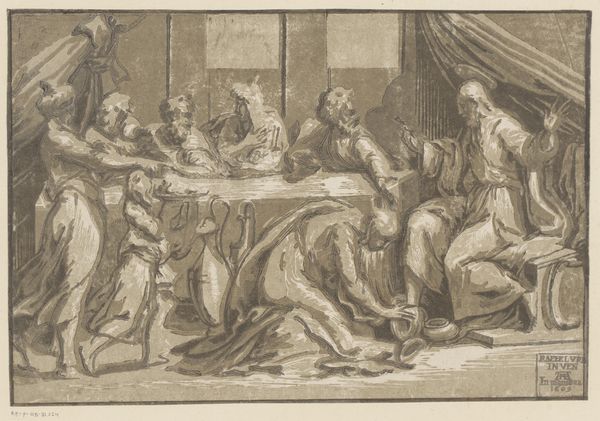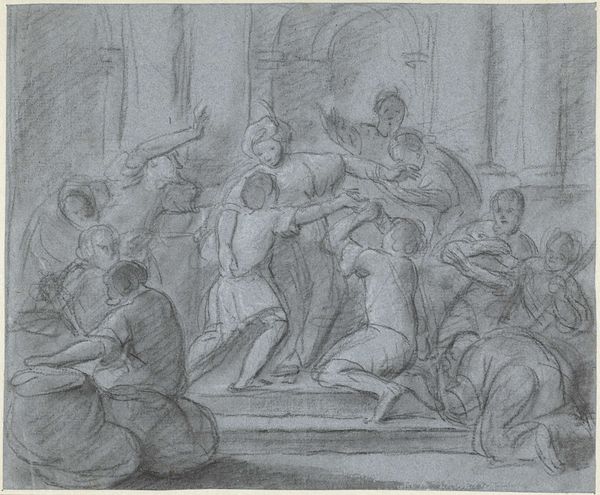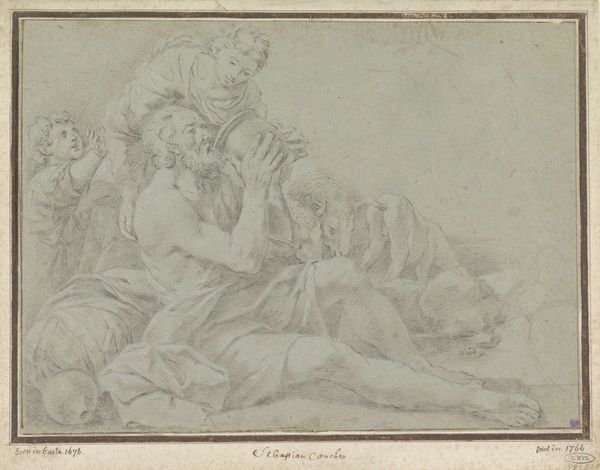
Semiramus Inspecting a Plan of Babylon 1750 - 1811
0:00
0:00
drawing, pencil
#
drawing
#
neoclacissism
#
figuration
#
pencil
#
history-painting
Dimensions: 10 5/16 x 16 3/16 in. (26.2 x 41.1 cm)
Copyright: Public Domain
Editor: This is Jean Simon Berthélemy’s pencil drawing, "Semiramis Inspecting a Plan of Babylon," made between 1750 and 1811. It strikes me as so calm, despite depicting a powerful queen overseeing city planning! What do you see in this piece? Curator: Well, the symbols speak volumes, don't they? Note how Semiramis, legendary founder of Babylon, is presented. Draped in classical robes, she embodies both power and wisdom, her pose reflecting authority. But consider the visual weight of the architectural plans themselves. What do they tell us? Editor: I guess, it’s not just a picture of a queen; it's about the grand vision of a city and civilization. Curator: Precisely. Berthélemy is tapping into a collective memory, an archetype of the ruler as architect, a bringer of order. Look, for example, at how ruins flank Semiramis. What sense do they convey? Editor: A sense of past glories and empires toppled? Curator: Yes, history. Each figure, each crumbling column, contributes to a narrative of power, legacy, and the cyclical nature of civilizations. What psychological impact might these symbols have had on viewers of the time? Editor: It must have evoked feelings about their own era, thinking about what lasts and what fades. The use of symbols really makes it powerful. Curator: Exactly. And isn’t that the enduring power of art—its ability to communicate through these visual shorthands across centuries? Editor: I agree. It’s far more than just an illustration of history, it’s also a symbol of its endless iterations, achievements, and reminders that nothing lasts forever. Thanks!
Comments
No comments
Be the first to comment and join the conversation on the ultimate creative platform.
